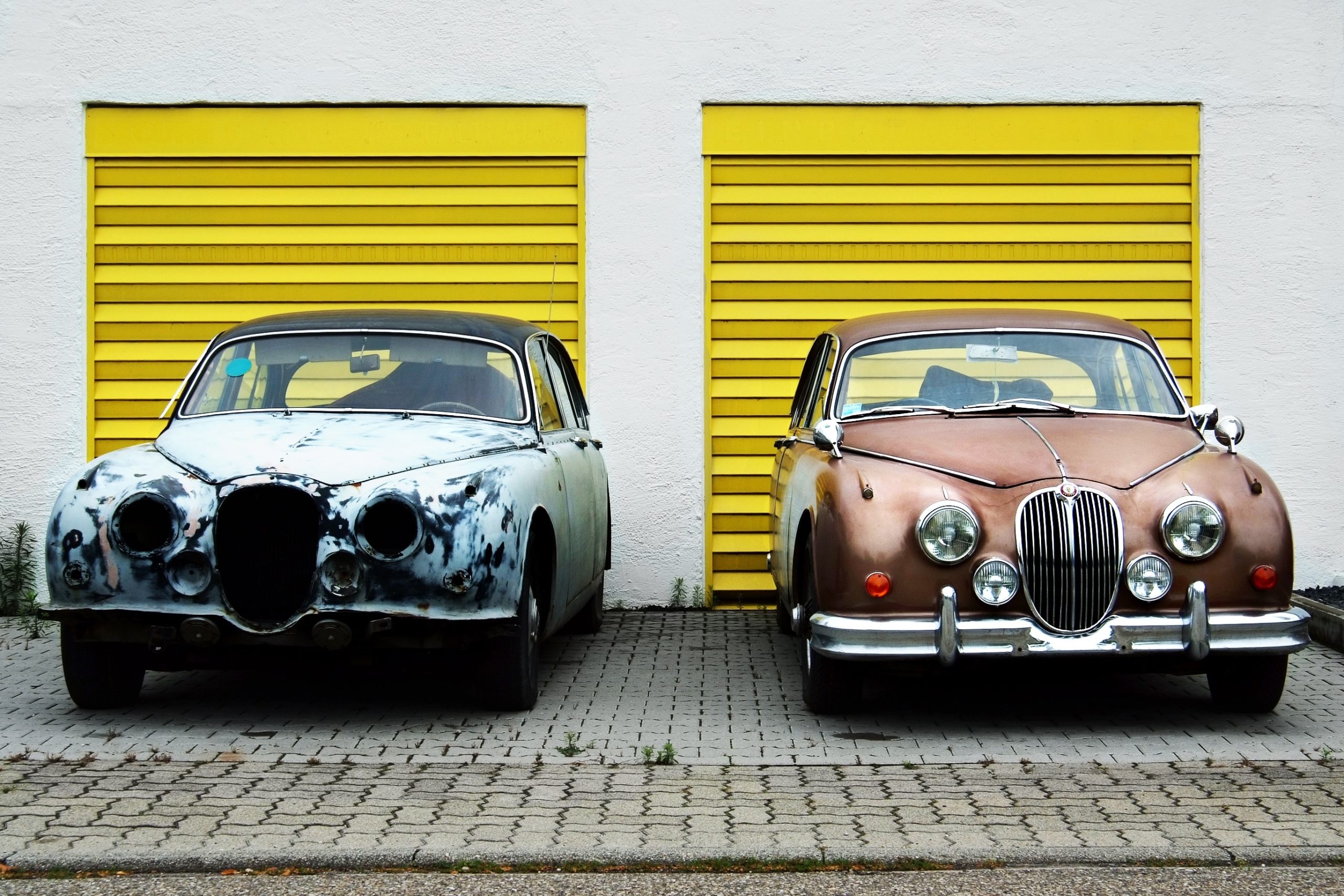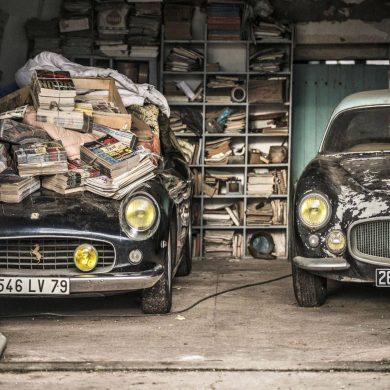We all love classic sports cars. That’s pretty evident because you’re reading this article, on a site dedicated to classic and vintage sports cars! Many of the cars that we feature on Sports Car Digest have been either passed from caring owner to caring owner, been owned by one person for the entire life of the car, or preserved by a museum or collector in pristine condition.
However, for every gem mint example of your favorite classic, there are probably 50 that have been ravaged by the passage of time. Sometimes they are left to rot in a barn, driven for hundreds of thousands of miles without proper maintenance and upkeep, or parked in a storage garage and simply forgotten about. Many sports car enthusiasts will look for these specific examples so they can restore them to as-new condition, or as close as possible.
While these people are the vanguard keeping classic cars running, there are hundreds of significant challenges facing the entire restoration community in the 21st century. Today, we’ll go over the biggest three that can slow down, or even stop, a restoration project: Emissions (even with an antique or vintage exemption), structural integrity, and parts.
Emissions: Ever Tighter, Ever Stricter, Even For Classics
In some states, you can apply for an exemption to meet emissions standards and requirements if your car is old enough and is driven a set number of miles per year. In other states, and also in many places around the world, to be able to drive the car you’ve painstakingly restored, you need to pass an emissions test before you can drive it. California’s CARB and the EU’s Euro5 standards are just two that are strictly enforced, although California does have an exemption law if your car was built before 1975.

Most of the time, be it a restoration or a restomod, this is tackled with fitting the exhaust of the vehicle with a new, designed-for-classics catalytic converter. There are many types for a whole multitude of cars and engines, from a lean-burning petrol engine to the oldest and roughest diesel engines. While it may “ruin” the car in terms of trying to keep it as original as possible, the fact of the matter is that a lot of the time, you need to make that sacrifice to be able to drive your classic.
It’s not so much an issue for a restomod, as the engine is usually the thing that gets switched out first. You’ve probably seen a couple of restomods in your time, like an old ‘67 Mustang with a gigantic Corvette LS7 sticking up through the hood, or an older MG-B with an inline four turbo out of a modern Fiesta ST. Part and parcel of those modern engines are the fact that their exhaust systems are designed with modern emissions regulations in mind, and the fact that the car is modified from its original condition helps as well.
Structural Integrity (A.K.A. Rust)
If you’ve spent any amount of time under an older car, likely doing an oil change, you’ve seen it. The fine brown dust, the R word that can spell disaster for a classic car, the one thing that time loves to use when attacking a classic. We are, of course, talking about rust.
This is especially prevalent in the “barn find” cars that have been left behind, exposed to the elements, and have started to rot after decades of neglect. Most classics that have been neglected in better situations, such as in a private garage, will have mostly body rust that will require some sanding, patching, and in the worst cases, fabricating a new panel. Barn finds, however, often have been sitting on packed dirt and exposed the elements that can sneak in through slat gaps and under barn doors. As dirt holds moisture well, even after the elements calm down evaporation can get that water into the chassis.

The real bugger about chassis integrity issues is that you’ll often not see or find them until you’ve stripped the car back to bare metal to start the build up. Even a small rust hole a couple of inches wide in a cross member is enough to completely derail a project, and might necessitate some judicious use of an angle grinder, some new steel, and a TIG welder. Other times, the chassis may be so far gone that you could be faced with fabricating an entirely new one to continue your project with.
This can be especially nasty in some cars from the 1970s and 1980s, as some of the sports cars from around that time started playing around with the idea of metal monocoques and “Tube frame” monocoques, and while they were often made out of aluminum, they too can still degrade over time. In those cases, such as with an older Lamborghini Countach, you are either completely out of luck, or you might be able to buy a replacement chassis from a specialist fabricator or, if you have the money, have Lamborghini’s Polo Storio classics department build you one.

Parts, Or The Lack Thereof
If you look at any modern car or truck, from the last year of its release or last year before a generation change, most manufacturers have a ten year parts supply plan. After that decade has passed, parts switch over to on-demand or third party only. However, since we’re talking about cars that could be up to 60, 70, or even 100 years old, it’s extremely unlikely you’ll be able to walk into Joe’s Car Parts and order up a piston ring.

Some companies, such as Mazda, Nissan and Porsche, know that their older cars are often collected, for example the RX-7 FC, Skyline GT-R32, and any generation of 911 respectively. For those companies, you can still order factory new parts, as they always have some on hand and have the molds for them in their archives. Other companies, such as Toyota, have started to make new parts for older cars, as there is a significant rise in the popularity of 1990s cars reaching the 25 year age to be deemed a classic, such as the Supra Mk IV and MR-2 Turbo.
Those, however, are specific cases of a company embracing the restoration and restomod community and providing factory new and guaranteed parts. But what if you’re restoring a Triumph TR6? The automotive side of Triumph was shuttered in 1984, and it’s very likely the molds were sold off as collectibles or lost. In those cases, you can really only get parts from a specialist manufacturer that is dedicated to that brand of car, or in the worst case, pay to have a part custom made.

This challenge is the one that will 9 times out of 10 stop a restoration project in its tracks. The world is a big place, and sometimes finding a crankshaft or connecting rod specifically for the engine you’re rebuilding is akin to finding a needle in a country full of haystacks.
Restoring A Car Can Be Challenging… But Not Impossible
isn’t it the point of restoring a car to overcome all the challenges you’ll encounter along the way? For many, that would be an immediate and very enthusiastic “Yes!” Being brutally honest, it could be that we classic car enthusiasts are a very stubborn bunch, determined to see a project through to the end no matter what. If it gets completely derailed and stuck, we then have the option of a restomod, improving the car in small or big ways with new engines, parts, materials, and fabrication techniques.
Classic sports cars are currently in a really good place, as there has been a resurgence of interest in the classic petrol drinkers as electric cars and motorcycles are starting to become, dare we say, mainstream. There are specialist companies in almost every city across the USA that deal with your particular brand (or brands) of interest. There are companies out there that are making new exhausts and catalytic converters, but making them look as original and classic as possible. Even some of the major manufacturers have dusted off their old parts molds and are now making new, factory guaranteed parts, simply because there is enough consumer interest.
So, roll up those sleeves, pick up that wrench, and face the modern restoration challenges head on!










